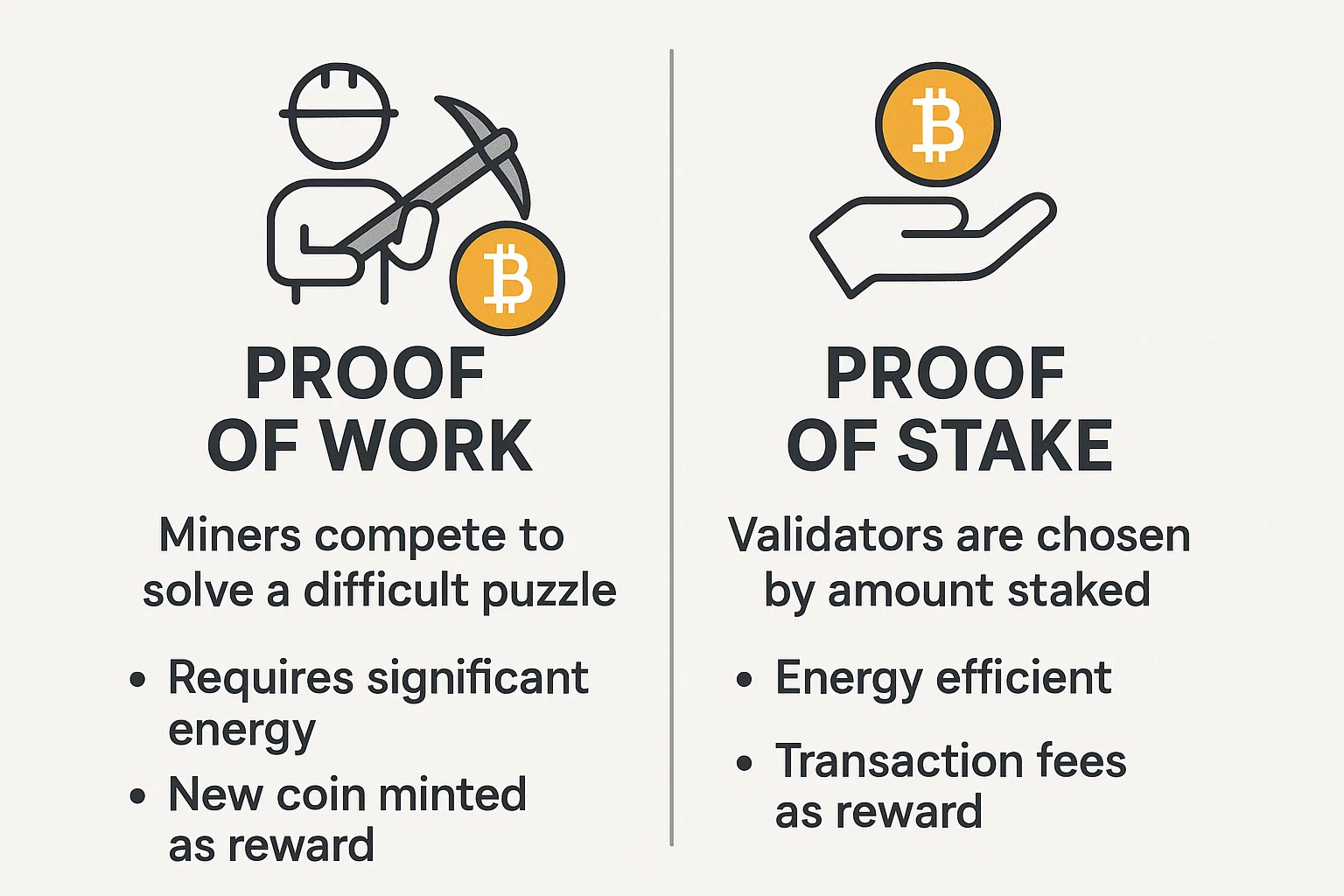Breaking News
Popular News




Enter your email address below and subscribe to our newsletter

The debate of Proof of Work vs Proof of Stake has become central to the evolution of blockchain technology. While PoW laid the foundation of crypto security, PoS offers a scalable, energy-efficient alternative.
This article from bit2050.com will help you understand both mechanisms and how they shape the future of blockchain.
Proof of Work is a consensus mechanism where miners compete to solve complex mathematical problems. The first to solve it gets to validate a block and earn crypto rewards.
Used by: Bitcoin, Litecoin
Requires: Expensive hardware (ASICs)
Downsides: High energy consumption
Proof of Stake selects validators based on the amount of cryptocurrency they “stake” as collateral. Validators propose and confirm blocks based on probability, not computational power.
Used by: Ethereum, Cardano, Solana
Requires: Staking crypto
Benefits: Energy efficient, eco-friendly
| Feature | Proof of Work (PoW) | Proof of Stake (PoS) |
|---|---|---|
| ✅ Security | High | Moderate to High |
| ⚡ Energy Consumption | Very High | Low |
| 💻 Hardware Requirement | Specialized mining rigs | Standard computer with staking |
| ⏱️ Speed & Scalability | Slower | Faster |
| 💸 Cost to Participate | Expensive (equipment & electricity) | Cost of staking coins |
| 🌱 Environmental Impact | Negative | Eco-friendly |
| 👥 Decentralization Risk | Moderate (centralized mining farms) | Varies based on staking rules |
There’s no one-size-fits-all answer.
PoW is more battle-tested and secure, ideal for currencies like Bitcoin.
PoS is scalable and sustainable, making it better for smart contract platforms like Ethereum and Cardano.
A: PoW has been time-tested for security (especially in Bitcoin). However, PoS is improving and used by Ethereum now.
A: To reduce energy consumption and improve scalability.
A: Yes. Different blockchains use different models based on their goals and communities.
A: That depends on how staking is implemented. In some networks, a few entities control a majority stake.
A: PoS is far more energy-efficient and considered eco-friendly compared to PoW.
The battle of Proof of Work vs Proof of Stake highlights the balance between security, decentralization, and sustainability. As the crypto industry matures, we may see hybrid solutions or entirely new consensus models emerge.
Stay updated on blockchain evolution by visiting bit2050.com — your gateway to crypto clarity.